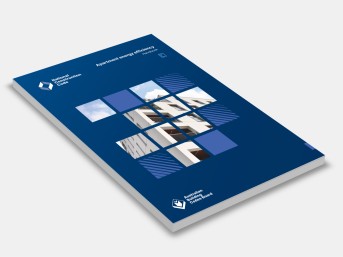Apartment energy efficiency Handbook
Australian Building Codes Board
Apartment energy efficiency requirements were first introduced into the Building Code of Australia (BCA) in 2006. As a result of government policy initiatives, major changes to these requirements occurred in 2010, 2019 and more recently 2022. The apartment energy efficiency requirements cover:
- individual apartments (sole-occupancy units (SOUs))
- the common areas of an apartment building (Class 2 building).
When compared to NCC 2019 there are 5 main changes to the energy efficiency requirements for an apartment building in NCC 2022. These include:
- changes to the clause numbering due to the introduction of a consistent volume structure (CVS) across all 3 volumes of the NCC.
- two new quantified Performance Requirements for SOUs.
- two new compliance pathways for SOUs.
- an increase in thermal performance (building fabric) stringency for an SOU and requirements to regulate the ‘energy value’ of an SOU with typical fixed appliance use.
- a new Performance Requirement and DTS Provisions to facilitate electric vehicle (EV) charging and renewable energy equipment.
The overall intent of the apartment energy efficiency requirements is to:
- reduce energy consumption and energy peak demand
- reduce greenhouse gas emissions
- improve occupant health and amenity.
Contents:
1: Introduction
2: Performance Requirements And Compliance Options
3: Compliance Options For An SOU (J1P2 And J1P3)
4: Compliance Options For Common Areas (J1P1 And J1P4)
Appendix A Abbreviations
Appendix B Glossary
Appendix C Compliance With The NCC
Appendix D Examples For An SOU
Appendix F Relevant Reports And Standards
